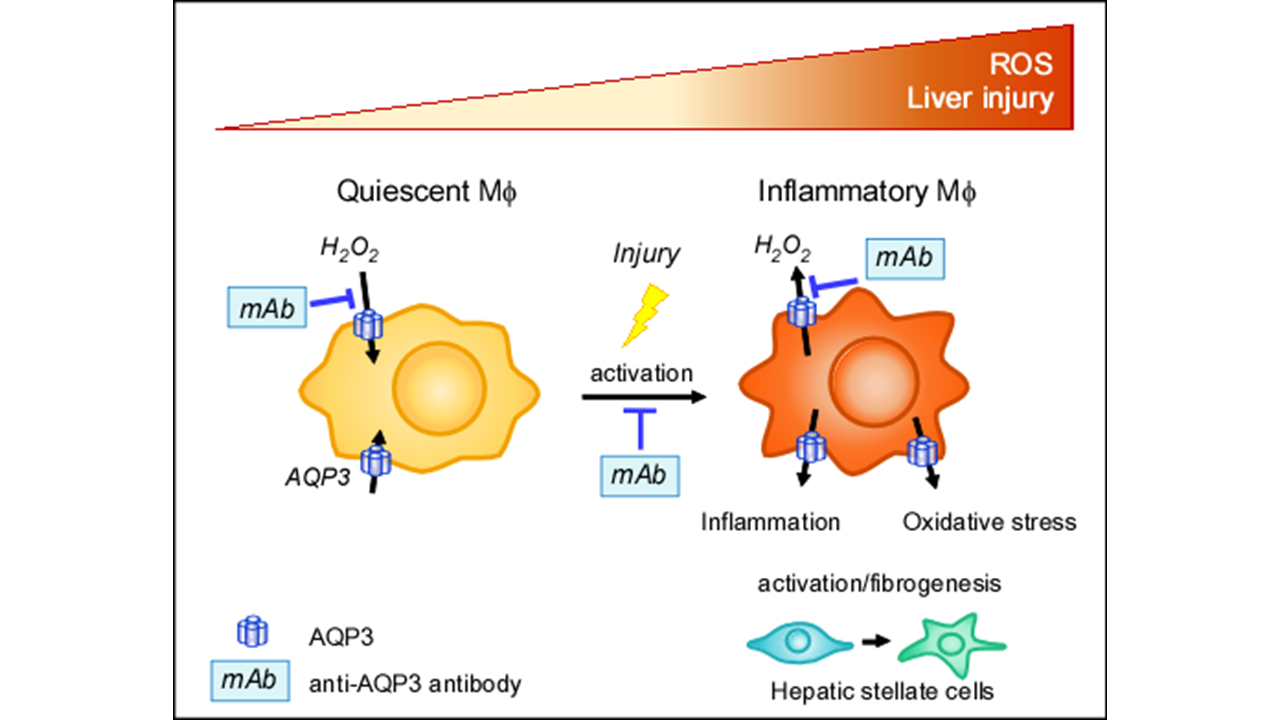Inhibition of aquaporin-3 in macrophages by a monoclonal antibody as potential therapy for liver injury

Title: Inhibition of aquaporin-3 in macrophages by a monoclonal antibody as potential therapy for liver injury
Authors: Mariko Hara-Chikuma, Manami Tanaka, Alan S. Verkman, Masato Yasui
Journal: Nature Communications, 11(1):5666 (2020)
DOI: 10.1038/s41467-020-19491-5
Abstract:
Aquaporin 3 (AQP3) is a transporter of water, glycerol and hydrogen peroxide (H2O2) that is expressed in various epithelial cells and in macrophages. Here, we developed an anti-AQP3 monoclonal antibody (mAb) that inhibited AQP3-facilitated H2O2 and glycerol transport, and prevented liver injury in experimental animal models. Using AQP3 knockout mice in a model of liver injury and fibrosis produced by CCl4, we obtained evidence for involvement of AQP3 expression in nuclear factor-κB (NF-κB) cell signaling, hepatic oxidative stress and inflammation in macrophages during liver injury. The activated macrophages caused stellate cell activation, leading to liver injury, by a mechanism involving AQP3-mediated H2O2 transport. Administration of an anti-AQP3 mAb, which targeted an extracellular epitope on AQP3, prevented liver injury by inhibition of AQP3-mediated H2O2 transport and macrophage activation. These findings implicate the involvement of macrophage AQP3 in liver injury, and provide evidence for mAb inhibition of AQP3-mediated H2O2 transport as therapy for macrophage-dependent liver injury.
Related Articles:





